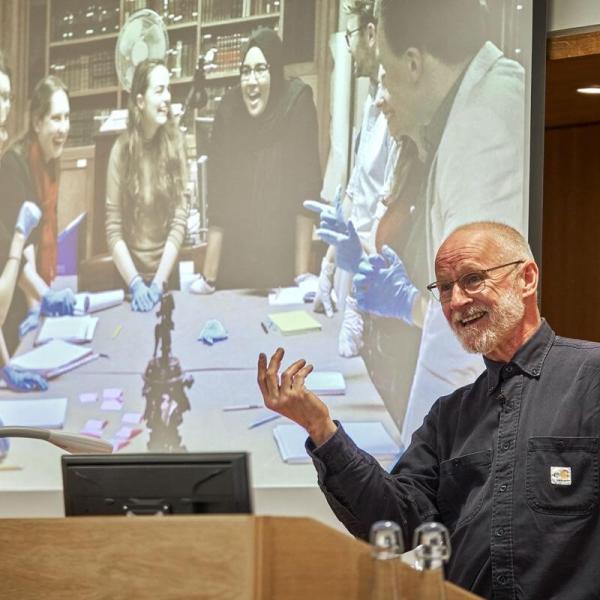About the event
The Ashmolean Museum’s Jim Harris discusses opportunities for interdisciplinary learning.
The Ashmolean Museum, Oxford. One afternoon in term time. Around a dozen people are standing in front of a display case, absolutely still and silent, gazing at an object.
Other visitors to the museum are not quite sure what to make of them. They look at them curiously, edge around them, leave the room. But when they come back five minutes later and discover that the silent watchers are still there, they lose their inhibitions and happily stride between and in front of them.
For Dr Jim Harris, teaching curator at the museum and one of the participants in the exercise, this was a powerful opportunity to explore one’s own body: ‘how you interact in space, how you interact with others in the same space … the responses as well as the participatory activity were all remarkable.’
It’s certainly not an exercise – or a set of learning points – that you would normally associate with a museum of art and archaeology. But then, in many ways, the Ashmolean is not a normal art and archaeology museum. The interests and collections of its founders, John Tradescant and Elias Ashmole, were broad, and the presence of Harris – ‘the only teaching curator that there is to be had in a university museum in this country’ – is testament to a distinctive commitment to the notion of interdisciplinarity.

